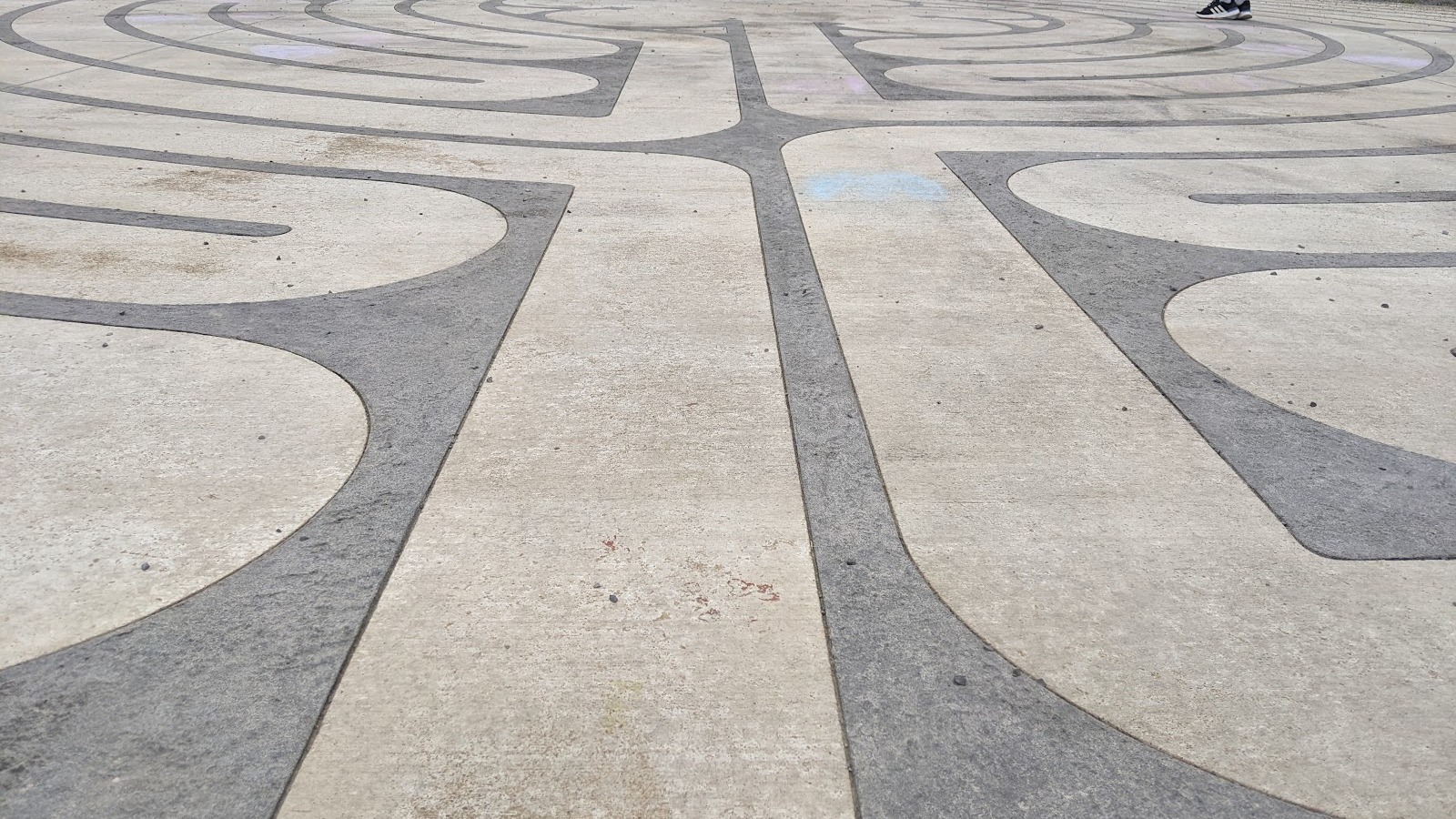First Time Walking a Labyrinth
I didn’t anticipate that my first trip to a labyrinth would become a race between grade schoolers, but Laura McArtor, a Veriditas trained labyrinth facilitator and co-founder of 901Labyrinths, assured me that there’s no right way to walk a labyrinth.
While it’s certainly not wrong to take kids to a labyrinth after school, it was admittedly not the best combination in which to try a new meditative practice. I decided to just walk, stepping out of the way of my kids, laughing with them when they lost track of the path, and reveling in the choice to go on an adventure instead of immediately home to dinner and homework.


It was an enjoyable interlude, but as I drove us home, I felt I had missed something intangible.
What is a Labyrinth?
Unlike mazes, which are puzzles to be solved, labyrinths are unicursal, with only one path from the outer edge to the center. You take the same path out that you walked in. There are no decisions to make, and minimal attention is needed to make the numerous turns.
AB Thomas, the other co-founder of 901 Labyrinths and also a Veriditas trained facilitator, calls labyrinths, “spiritual tools that can help you find your way.” McArtor refers to them as “an invitation.”
Labyrinths have been in use for over 4,000 years. Classical labyrinths appear on rock carvings, paintings, basket weavings, and coins dating back to 2000 BCE in cultures across Africa, Asia, Europe, and the Americas. Romans made mosaic labyrinths, and, in the medieval period, designers added additional turns and points. The labyrinth in Chartres Cathedral dates to around 1215 CE and is arguably the most famous labyrinth design in the world. In fact, the labyrinth I walked in Cancer Survivors’ Park is the Chartres design.

Why Labyrinths?
Walking a labyrinth is a tool for meditation, the process of thinking deeply or focusing your attention for a period of time. According to Thomas, “The practice of walking the labyrinth integrates the body with the mind and the mind with the spirit. Labyrinths are open to all people, all cultures, all religions, and even no tradition.”
They can be used for religious, ritual, or secular purposes. Some people use labyrinths for relaxation, others for ritual or prayer, still others for healing or ceremony.
For McArtor, “Labyrinth walking is the practice that lets me tune out the comparing mind and the mental clutter and reminds me we are all on the same path. It is humbling and empowering. Science and magic. Meandering and clear. Both and.”
Second Trip
My second time at the labyrinth was different. I realized that I am not adaptable enough to walk a labyrinth without researching how to do it. I read a few suggestions, such as releasing thoughts on the way in, receiving in the center, and returning to the world on the way out.
This time, I went by myself. It was also one of the only times I had been truly alone in the days following the tragic death of a friend.
This time, I noticed the blooming flowers surrounding the path to the labyrinth. In the silence that was not quiet, I heard cars on the street and the hard chews from a concealed mockingbird. After a few steps, those sounds stopped consciously registering.
I used my meandering journey inward to let thoughts pass unremarked. By the time I reached the center, I had a clear prayer in mind. I said it in my heart, and then I walked out.
Thomas noted in a lecture she recently gave at Memphis Theological Seminary that the effects of labyrinth walking are cumulative, and each person’s experience is different. I did not experience any shattering revelations or experience instantaneous clarity, but I did feel my mind unwinding as I left the labyrinth behind. I felt that I had looked straight at my complicated emotions and was ready to face the day ahead.
901Labyrinths & World Labyrinth Day

McArtor and Thomas created 901Labyrinths to share their practice with other Memphians. Their next event is World Labyrinth Day. Held internationally on the first Saturday of May, this unofficial holiday encourages walkers worldwide to “Walk as One at 1:00.” The focus of this moving meditation is world peace.
901Labyrinths’s community walk will be at Cancer Survivors’ Park on Perkins Extended on Saturday, May 7, 2022, at 1PM. McArtor and Thomas will be leading it. No previous experience needed, and all faith and spiritual traditions are welcome.
If you are intrigued and, like me, you are the type of person who prefers a bit of instruction, World Labyrinth Day is a good place to start.
If you can’t make it, you can always visit one of the public labyrinths in Memphis whenever you like. As McArtor says, “The labyrinth is always available to meet you where you are.”
Caroline Mitchell Carrico is a native Memphian and, as a historian by training, she enjoys researching the city’s past and pulling it into the present. When she isn’t reading and writing, she can often be found cheering on her kids’ soccer teams.

